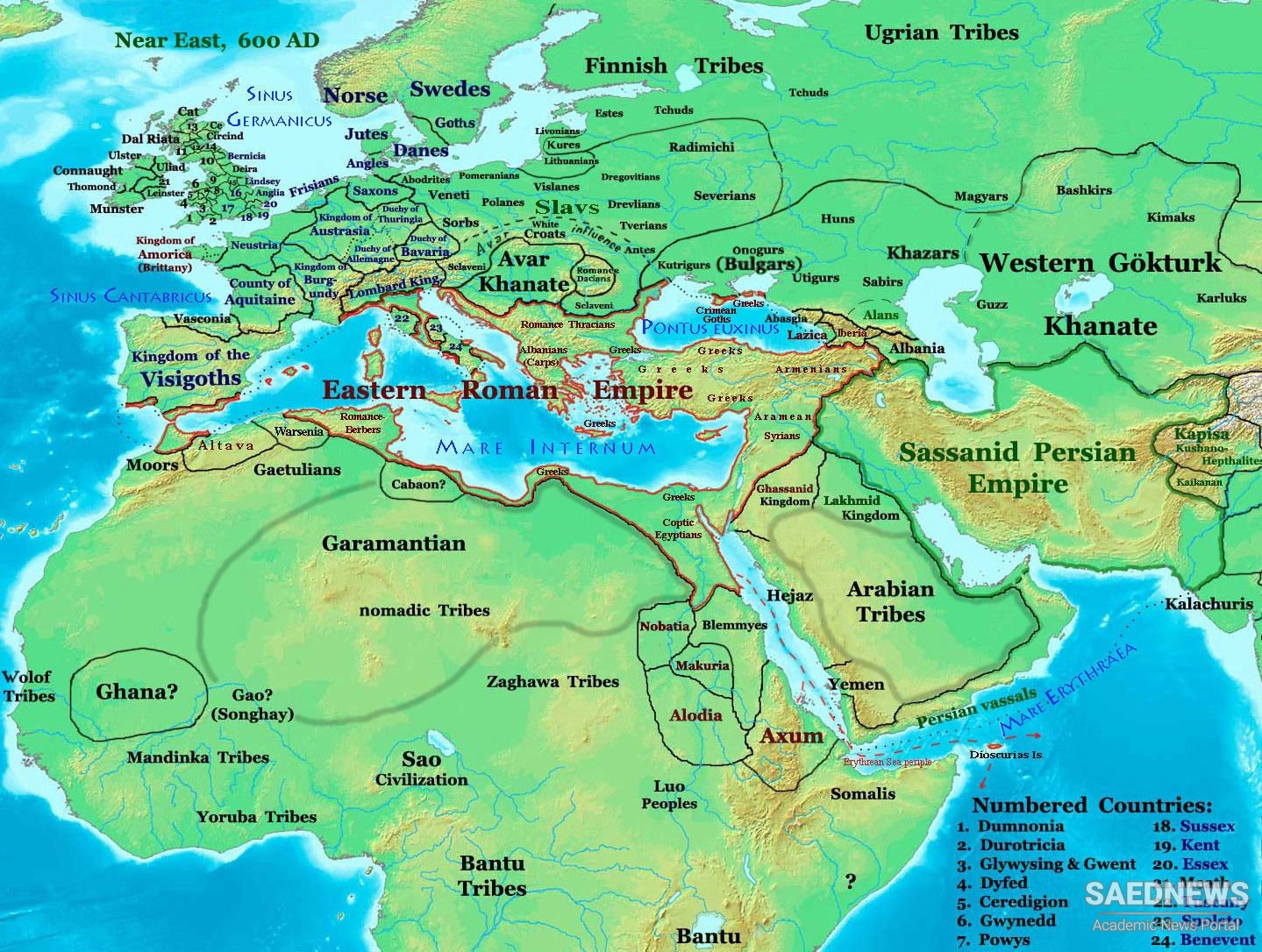Despite different hypotheses of the original home of Samanids, the village near Balkh or Tirmidh is a shade more probable since the earliest appearance of the Samanid family in the sources seems to be in Khurasan rather than in Transoxiana. In some sources the Samanids claimed to be descended from the noble Sasanian family of Bahram Chubin, whereas one author claimed that they were of Turkish origin and. belonged to the Oghuz tribe, which is most unlikely, but conceivably may be a later attempt to link them to a Hephthalite or Turkish origin. All traditions relating to the origin of the dynasty, however, have it that Saman accepted Islam from Asad b. Abd-Allah al-Qasri (or Qushairl), governor of Khurasan 105-9/723-7, for subsequently Saman named his son Asad after the governor. We hear no more of Asad until the time of al-Ma'mun, when his governor of Khurasan, Ghassan b. 'Abbad, rewarded the four sons of Asad for their support of al-Ma'mun against a rebel Rafi b. Laith. This was about the year 204/819, and the four sons of Asad were appointed over the following cities: Nuh - Samarqand, Ahmad - Farghana, Yahya - Shash and Ilyas - Herat. This assignment of rule to the sons of Asad marked the beginning of Samanid power in Transoxiana, for the line of Ilyas in Herat did not fare as well as did his brothers in the north. Ilyas died in 242/856 and his son Ibrahim took his place in Herat. Afterwards Ibrahim was called by Muhammad b. Tahir, governor of Khurasan, to become his army commander, but he unsuccessfully fought against the Kharijites in Sistan. When Ya'qub b. Laith besieged Herat, the Tahirid governor sent Ilyas against Ya'qub. At a battle near Fushanj (or Pushang) in 253/867 Ilyas was defeated by Ya'qiib and fled to Nishapur, where he later surrendered to Ya'qub and was taken as a captive by him to Sistan. In Transoxiana, at the death of Nuh (227/841-2), the governor of Khurasan appointed both of Nuh's brothers, Yahya and Ahmad, over he city of Samarqand, but Ahmad (d. 250/864-5) survived his brother (d. 241/85 5) and transmitted power to one son Nasr in Samarqand, and to another son, Ya'qub in Shash, who ruled there a long time. We do not know exactly what happened between Yahya and Ahmad, and why the line of Ahmad replaced that of his brother Yahya. Perhaps Yahya surrendered power to his more energetic brother Ahmad, who ruled most of Transoxiana, other than the oasis of Bukhara and Khwarazm, while Yahya remained only a figurehead ruler in Samarqand. It is significant that no coins of Yahya have been found whereas copper coins of Ahmad begin in 244/858-9 in Samarqand. (The right of the Samanids to strike silver coins, dirhams, did not exist before Nasr b. Ahmad, c. 273/886.) With the breakdown of the authority of the Tahirid governors of Khurasan and the victories of Ya'qub b. Laith, Nasr b. Ahmad found himself the virtually independent ruler of Transoxiana with his capital in Samarqand. He consolidated his power by sending his brother Isma'Il to Bukhara which was in a chaotic state in the vacuum left by the fall of the Tahirids. Khwarazmian troops had raided and pillaged the town so Isma'Il was welcomed by the people who supported him from the outset as the restorer of order. It was not long before disagreement over the allocation of tax money caused strife between Isma'Il and his brother Nasr. The story of the conflict between the two, and the victory of Ismail, is related by Narshakhi, as well as by other sources. Although Isma'Il was the victor in the fratricidal struggle, he did not move to Samarqand but made Bukhara the new centre of the Samanid state.


 The Rise of Undefeated Deity in Mount Olympus: Zeus the Son of Coronus
The Rise of Undefeated Deity in Mount Olympus: Zeus the Son of Coronus














































